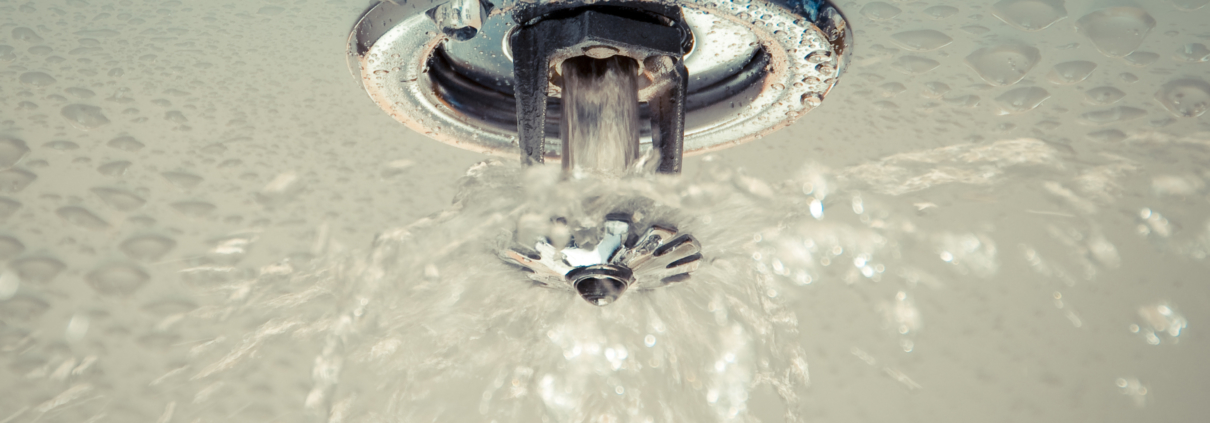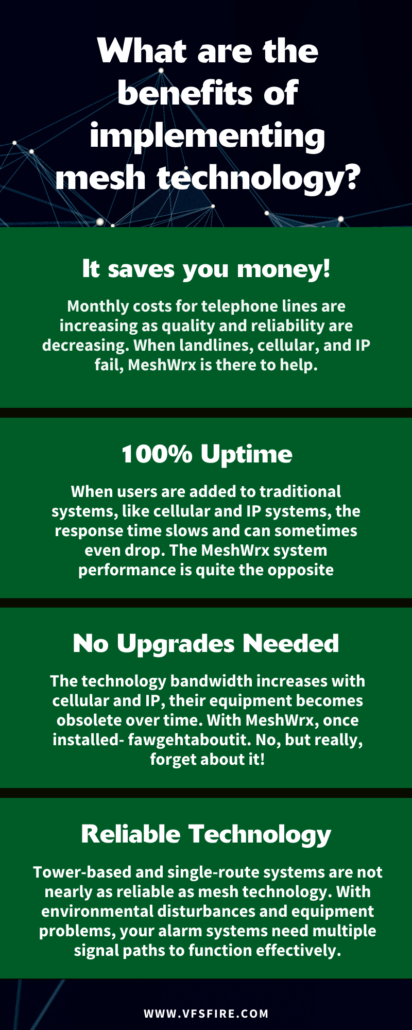Your general thought process might look something like this: “Water puts out fires, so sprinklers must be a type of fire suppression, right?”
Wrong.
There is a difference between fire suppression and fire sprinklers, and VFS Fire & Security Services is here to help figure out which fire safety measures are right for your commercial building!
Fire Suppression
Fire suppression systems are considered one of our specialties at VFS. Fire suppression systems are used to extinguish or control fires and are activated by heat, smoke, or a combination of the two.
These systems are typically found in places like museums, libraries, data centers, and archives. Unlike wet-pipe sprinkler systems, suppression systems use gaseous, chemical or foam agents to suppress the fire, rather than water.
This aids in the preservation of sensitive equipment and content within a particular environment. There are many different applications of fire suppression depending on the area in which these systems are housed. There are various types of fire suppression systems.
Clean Agent
Clean agent fire suppression, is a term used to describe the use of inert gases to extinguish a fire. These systems all have three main components:
- Smoke Detector
- Control Panel
- Notification Devices
When the smoke detector is triggered, it sends a signal to the control panel which then alerts the notification devices, activating the release device to suppress the fire.
Clean agent fire suppression systems are fast-acting and most effective in protecting sensitive equipment and environments because they are designed to suppress the fire in its incipient stage. They are electronically nonconducting and unlike water, they won’t ruin electrical components or electronics.
They are most often found in server rooms, record/file repositories, and data centers that require an increased level of protection to prevent unnecessary and accidental discharge of systems.
The Details
- Inert gases: Nitrogen, argon, and carbon dioxide work together by lowering oxygen content in a room below the level that supports combustion, while still allowing a person to breathe keeping your environment and your personnel safe.
- Fluorocarbon-based extinguishers are described as “clean agents” as they do not leave any oily residues, particulates or water damage and rapidly extinguish fires with a superb weight to effectiveness ratio. These extinguishing agents are also safe to use in occupied spaces and offer unique advantages in speed, performance, and safety.
CO2 Systems
C02 is an effective method of extinguishing a wide range of flammable and combustible materials in both surface and deep-seated fires. Carbon dioxide is a colorless and odorless three-dimensional clean agent. It is typically harmless to equipment, materials, and property preventing excessive damage to equipment to your facility in the event of a discharge.
There are high and low-pressure CO2 systems. High-pressure systems use individual storage cylinders ranging from 35 lbs to 120 lbs. Low-pressure C02 systems are ideal for non-occupied fire hazards requiring large amounts of extinguishing agents in a limited space.
Wet Chemical
Extinguishing methods of wet chemical suppression systems are specific to the type of cooking fires that may occur in a commercial kitchen. When triggered, the system discharges immediately with a liquid that, when sprayed onto the fire, cools the flames almost instantaneously.
When this liquid comes into contact with the oils and fats it creates a foam, subsequently cooling the affected area and preventing the spread and from the potential of reigniting.
Dry Chemical
Dry chemical is a type of fire protection system that makes use of a dry chemical powder to extinguish a fire. Most dry chemical fire suppression systems use a large tank that is filled with dry chemical powder, which is then pressurized.
There are other types of fire suppression systems (including pre-engineered system applications and water mist systems), but what’s the difference between suppression and sprinkler systems?
Fire Sprinkler Systems
The biggest difference between the suppression systems already mentioned and sprinkler systems is the use of water instead of foam.
All sprinkler systems are designed and engineered in different ways depending on the environment, the assets being stored in a particular space, and NFPA requirements and specifications.
The methods of activation vary depending on the system but one thing is for sure-fire sprinkler systems are designed to protect your assets by controlling and extinguishing fires!
The different types of fire sprinkler systems include:
- Wet Pipe
- Dry Pipe
- Pre Action
- Deluge
- Foam Water Systems
- Fire Pumps
- Fire Backflow
There are a lot of factors that go into commercial sprinkler systems. Learn more details about the different types of sprinkler systems on our blog.





